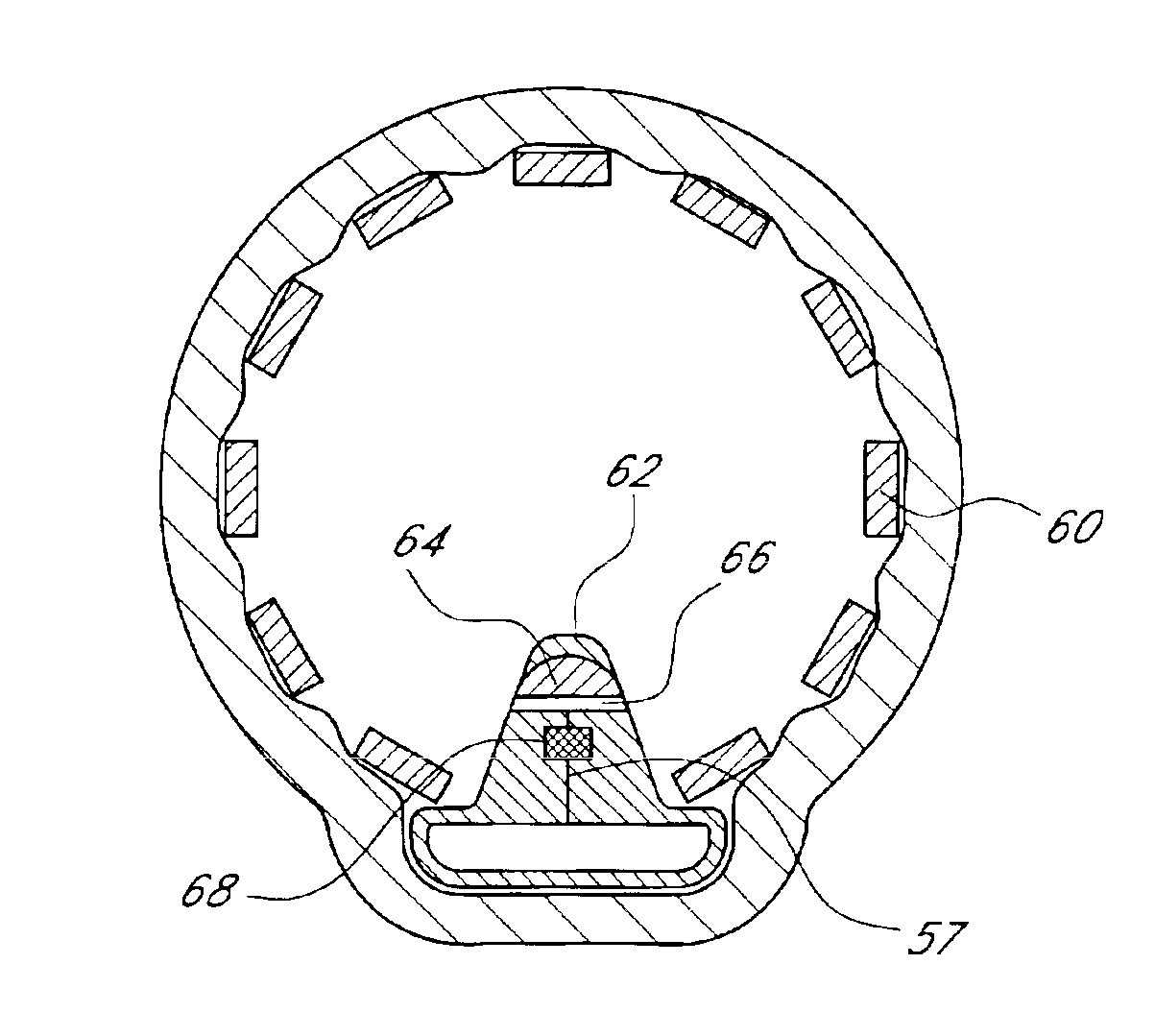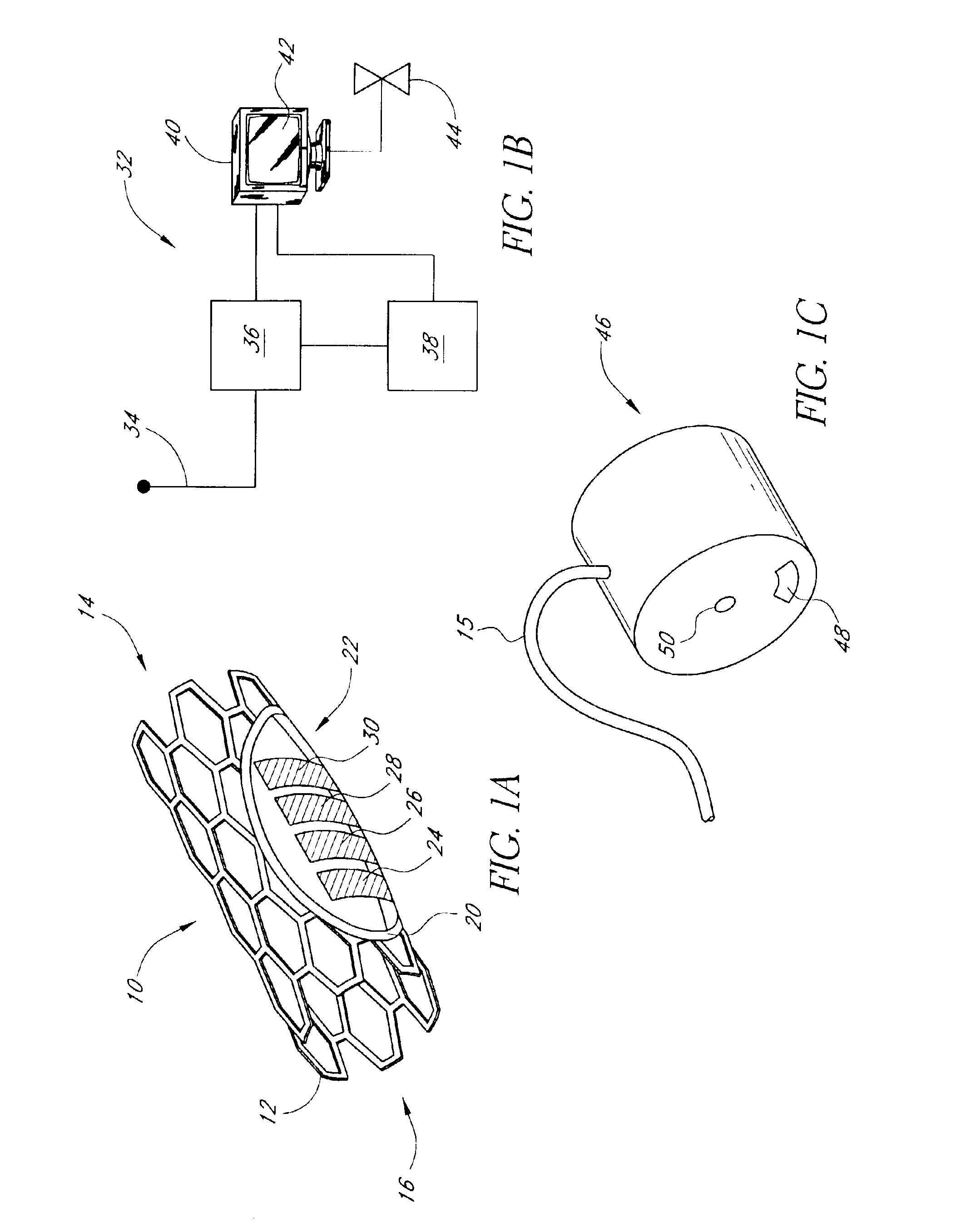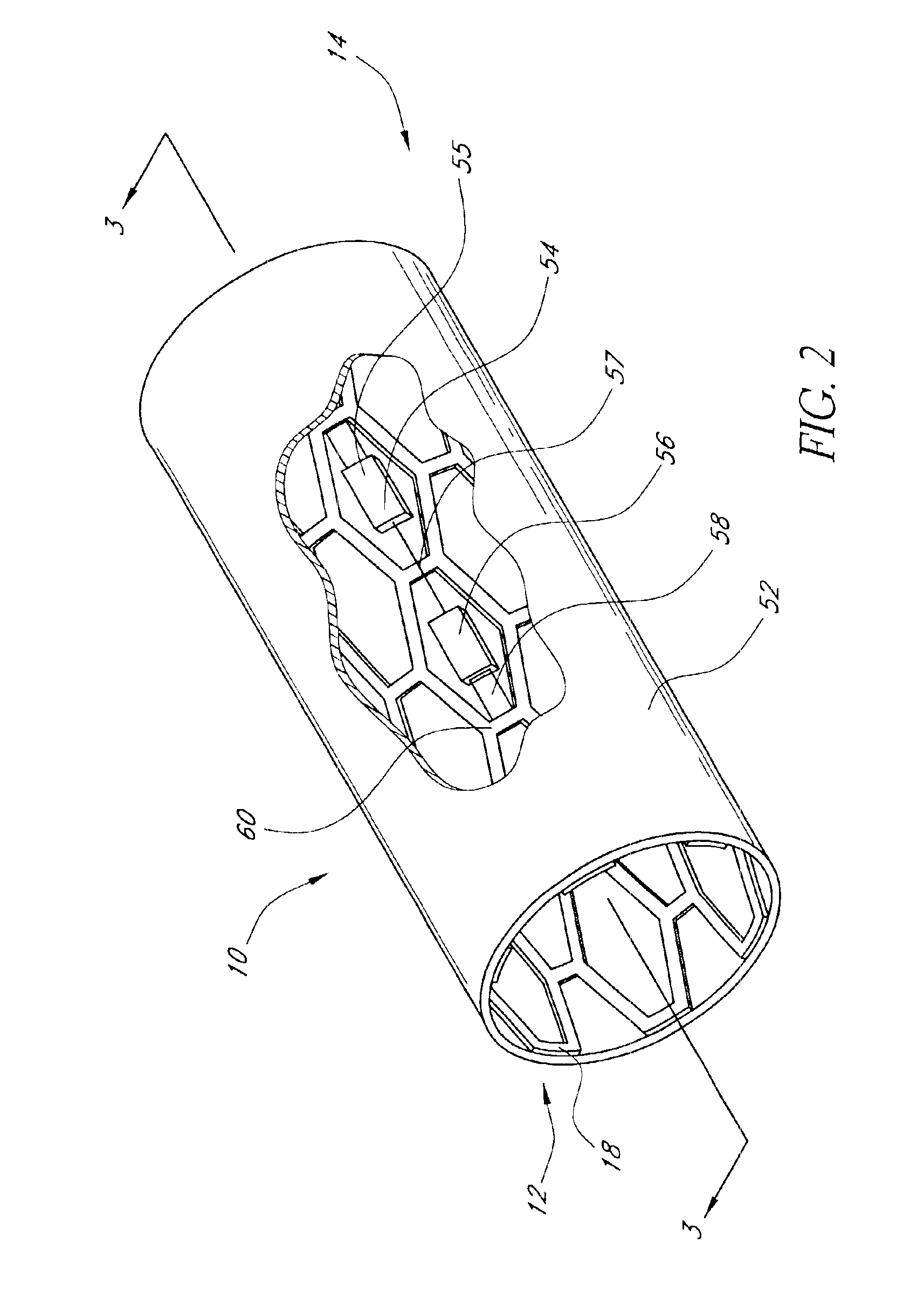Implantable sensor
a sensor and sensor technology, applied in the field of implantable sensors, can solve the problems of increased risk of heart disease, increased risk of end-stage renal disease, and increased risk of hypoglycemia, and achieve the effects of minimizing the thickness of the formed thrombus layer, avoiding the occurrence of fibrotic reactions, and avoiding fibrotic reactions
- Summary
- Abstract
- Description
- Claims
- Application Information
AI Technical Summary
Benefits of technology
Problems solved by technology
Method used
Image
Examples
Embodiment Construction
[0056]In accordance with the present invention, an intraluminal blood glucose sensor is provided on a support structure such as a modified stent of the type implanted following percutaneous transluminal coronary angioplasty (PTCA) for the treatment of atherosclerosis. Atherosclerosis is the build-up of fatty deposits or plaque on the inner walls of a patient's arteries. These lesions decrease the effective size of the artery lumen and limit blood flow through the artery, prospectively causing a myocardial infarction or heart attack if the lesions occur in coronary arteries that supply oxygenated blood to the heart muscles. In the angioplasty procedure, a guide wire is inserted into the femoral artery and is passed through the aorta into the diseased coronary artery. A catheter having a balloon attached to its distal end is advanced along the guide wire to a point where the stenotic lesions limit blood flow through the coronary artery. The balloon is then inflated, compressing the le...
PUM
 Login to View More
Login to View More Abstract
Description
Claims
Application Information
 Login to View More
Login to View More - R&D
- Intellectual Property
- Life Sciences
- Materials
- Tech Scout
- Unparalleled Data Quality
- Higher Quality Content
- 60% Fewer Hallucinations
Browse by: Latest US Patents, China's latest patents, Technical Efficacy Thesaurus, Application Domain, Technology Topic, Popular Technical Reports.
© 2025 PatSnap. All rights reserved.Legal|Privacy policy|Modern Slavery Act Transparency Statement|Sitemap|About US| Contact US: help@patsnap.com



